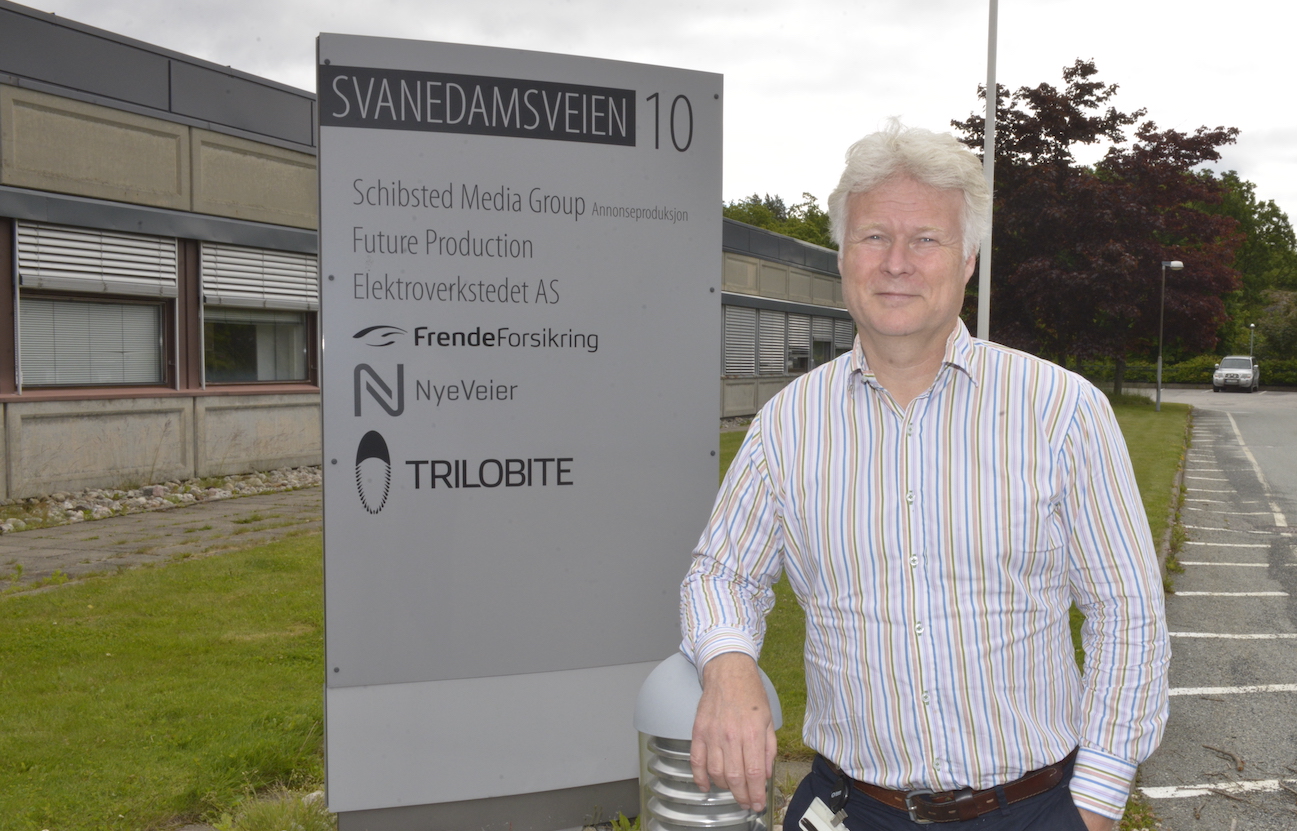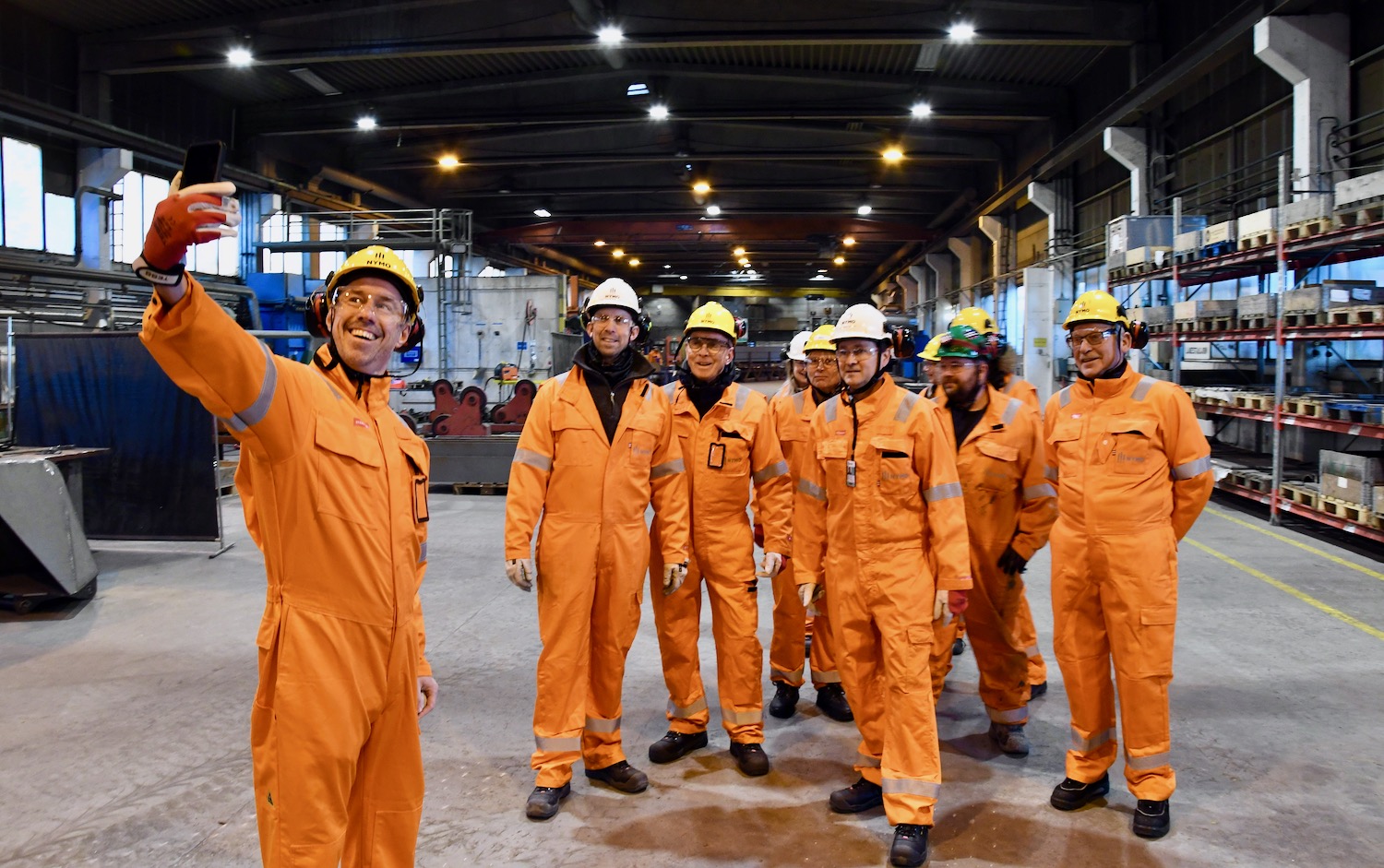“After a few quiet years, the maritime and oil and gas industries are picking up. Also, the energy transition provides new opportunities for a tech company like ours,” says Bringa.
The 62-year-old is a veteran in the oil and gas supplier industry. Today, the former CEO of Cameron Sense, one of the major companies in the GCE NODE cluster, head some 30+ engineers and specialists who develop and design advanced offshore equipment for Future Production.
“It is incredibly rewarding to work with a team of employees who are so technically skilled and know much more about industrial design than I do. My contribution is primarily experience. I have been involved in most aspects of this business, and have a pretty good overview,” says Bringa.
COUNTING ATOMS
Actually, it is a bit coincidental that Bringa ended up in the offshore industry. After graduating from Kristiansand Cathedral School in the spring of 1978, he went on to the Norwegian University of Science and Technology in Trondheim where he studied theoretical physics.
“It was a quite narrow topic, which could easily lead to a long life as a researcher in a secluded laboratory. At the same time, great opportunities opened in the Norwegian petroleum industry. So instead of counting atoms, I transferred to the petroleum class,” says Bringa.
There have been no regrets. After graduating, Bringa went straight to work for the Bjarne Skeie company NRC, which had specialized in designing state-of-the-art oil rigs. Optimism in the oil industry seemed higher than the oil rig towers in the North Sea.
“It was like Klondyke, that was the atmosphere! NRC had ambitions to be at the forefront technologically and was among the first in the industry to use 3D CAD as a tool in rig design. We invested half our annual turnover in computers,” Bringa says.
CEO OF CAMERON SENSE
The oil industry was an exciting place for a young engineer from Agder. In the late 1990s, Bringa found himself working for Maritime Tentech in Japan, where he was involved in developing and delivering the floating production platform (FPSO) Åsgard, which is still in operation for Equinor in the North Sea.
“I stayed in Japan for a couple of years. Getting familiar with Japanese business, culture and people was a memorable experience and one of the highlights of my career.”
In the 2000s, Bringa took part in a new boom in the offshore industry, as an employee of Aker MH. From 1998 and in the first years of the new millennium, times were turbulent. Aker MH had been very successful with their Ramrig concept, but underestimated the workload associated with delivering the projects. Assignments piled up and deliveries were delayed.
“We underestimated the complexity of the tasks. Times were tough with great pressure put on the employees,” Bringa recalls.
After five years (2007-2012) with Mosvold Shipping, building drilling rigs and offshore vessels on speculation, Bringa accepted a management job in the American-owned oil service major Cameron International. Cameron shortly after acquired TTS Drilling Systems, with the ambition to challenge National Oilwell Varco and Aker MH as a supplier of complete drilling packages.
“I was employed as Vice President Business Development for the Cameron drilling systems division but agreed to be CEO for Cameron Sense for a transitional period of almost a year. However, my preference was to work with business development in the Cameron Drilling Division, and after the transitional CEO period I went back to this position,” says Bringa.
ENTERING RENEWABLES
For the past eight years, Bringa has been CEO of Future Production, which during his time has grown from 10 to 30+ employees. The company delivers tailor-made products for handling and lifting equipment on drilling platforms. In times of major restructuring and demands for innovation in the industry, Bringa sees changes and opportunities.
“Major changes are underway, and we expect the oil and gas market to improve significantly going forward. At the same time a transition to new and less carbon emitting energy sources are gaining momentum. This represents an opportunity to find new markets for our expertise. Oil and gas related projects are expected to remain our most important business segment for many years to come, but the importance of renewable energy production will increase,” says Bringa.
He is confident that Future Production will be awarded its first major contract from the renewable energy industry in the very near future.
“The supplier industry in our region has proven that it is globally competitive and has great potential to assert itself in related markets such as offshore wind, mineral extraction on the seabed and the offshore aquaculture industry,” says Bringa.
A year ago, he was elected as member of the GCE NODE Board of Directors. Bringa brings tons of experience to the cluster. He thinks the cluster plays an important role in Agder.
“I am impressed by the position GCE NODE has achieved over the years. It has become an important meeting point for the participants, and an arena for knowledge-sharing and cooperation. I find it stimulating to work together with colleagues and competitors to find new business opportunities in the green transition,” says Torstein Bringa.



